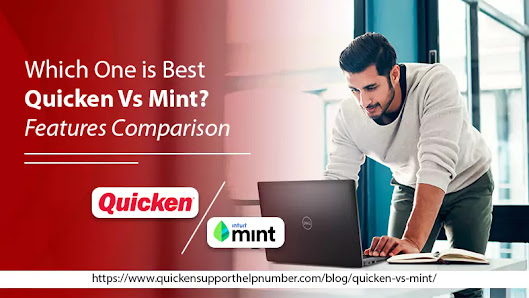Managing personal finances can be overwhelming, and selecting the right tools to help you achieve your financial goals is crucial. Quicken and Mint are two of the most popular personal finance management software available today. Both applications offer a wide range of features, but which one best fits you? This comprehensive blog compares Quicken vs Mint to help you decide which one aligns better with your financial objectives and preferences.
Quicken vs Mint Overview
Here we are going to through the overview of Quicken vs Mint:
Overview of Quicken
Quicken is a well-established personal finance management software serving users for over three decades. It offers robust features like budgeting, bill management, investment tracking, and retirement planning. Quicken's desktop-based software is available for both Windows and Mac and offers a mobile app for Android and iOS devices.
Overview of Mint
Mint is a free, web-based personal finance management tool that has quickly gained popularity since its launch in 2006. Mint's easy-to-use interface and automated features make it a favorite among users new to personal finance management. Mint offers budgeting, expense tracking, credit score monitoring, and bill reminders.
Comparing Features - Quicken vs Mint
In this section, we will compare the feature of Mint vs Quicken.
Budgeting
Both Quicken and Mint excel in budgeting. Quicken provides detailed budgeting tools, allowing users to create customized budgets based on various categories and set financial goals. On the other hand, Mint offers a more straightforward budgeting approach. It automatically categorizes transactions and provides a visual overview of your spending habits, making it easy to spot trends and adjust your budget accordingly.
Bill Management
Quicken provides a comprehensive bill management system, including online bill pay, reminders, and tracking. Users can also link their billers directly to their Quicken account, enabling automatic updates and payments. Mint offers bill reminders and track but lacks an online bill payment feature.
Investment Tracking
Quicken stands out in investment tracking, offering in-depth analysis of your investment portfolio, including performance, asset allocation, and capital gains tracking. Quicken also provides tools for tracking rental property income and expenses. However, Mint only offers basic investment tracking, such as account balances and transactions.
Retirement Planning
Quicken offers retirement planning tools that help users estimate their retirement needs, track their progress, and adjust their plans accordingly. Users can also link their 401(k), and IRA accounts for a complete view of their retirement savings. Mint does not offer dedicated retirement planning features.
Credit Score Monitoring
Mint offers free credit score monitoring, providing users with an overview of their credit report and personalized recommendations for improving their credit score. Quicken does not provide credit score monitoring.
Ease of Use
Mint's user-friendly interface and automated features make it a more accessible option for those new to personal finance management. Quicken, while offering powerful tools, can be more challenging to navigate for beginners due to its extensive features.
Pricing
Mint is a free service, making it an attractive option for budget-conscious users. On the other hand, Quicken offers various subscription plans ranging from $35.99 to $103.99 per year, depending on the features you need.
Conclusion
Quicken vs Mint offers valuable personal finance management tools catering to different user preferences and needs. Ultimately, the choice between Quicken and Mint will depend on your specific financial goals, preferences, and budget. Both platforms offer valuable tools to help you take control of your finances and work towards a brighter financial future. Thank You!

No comments:
Post a Comment